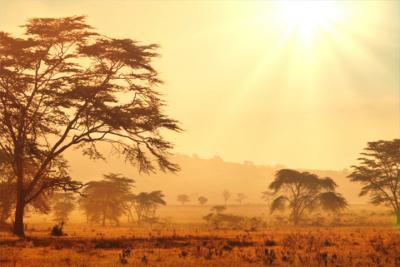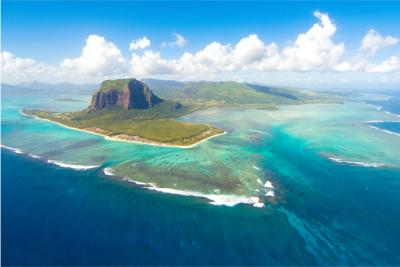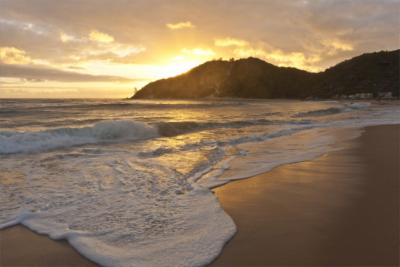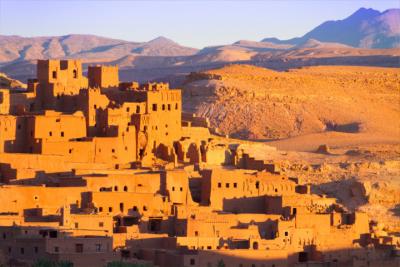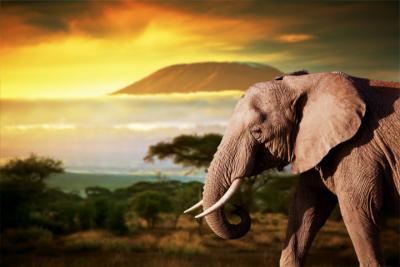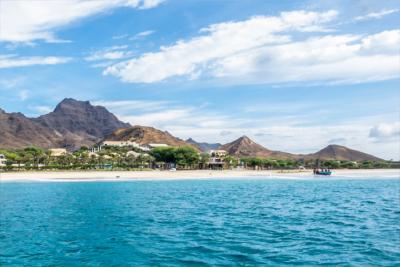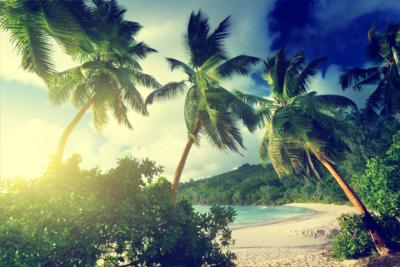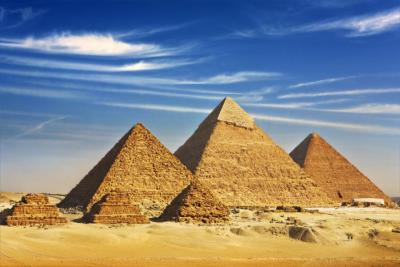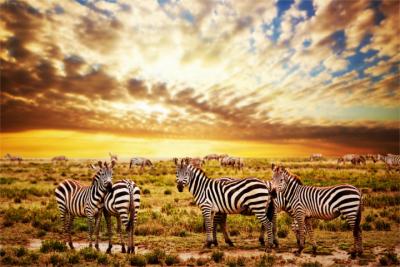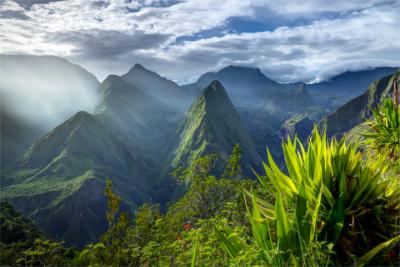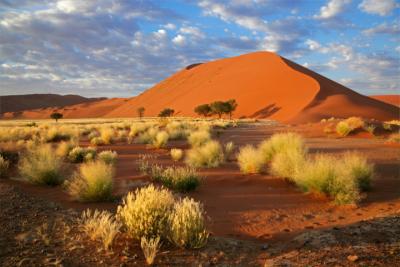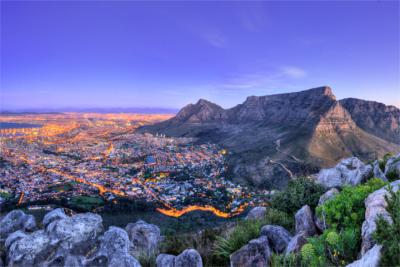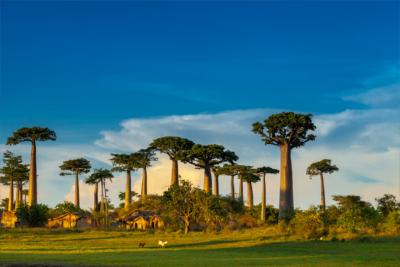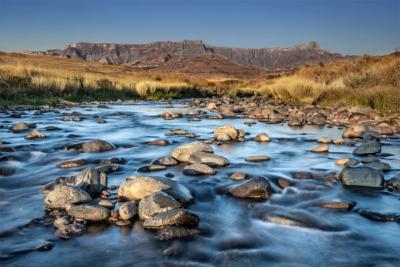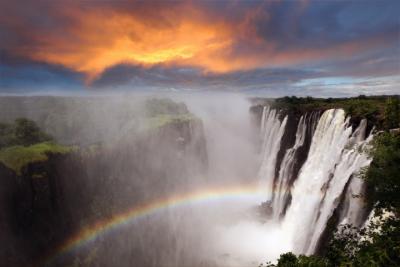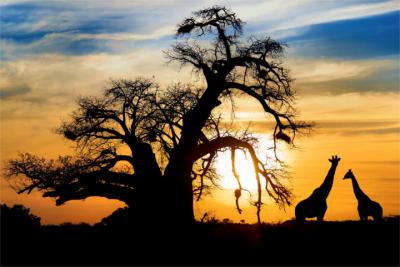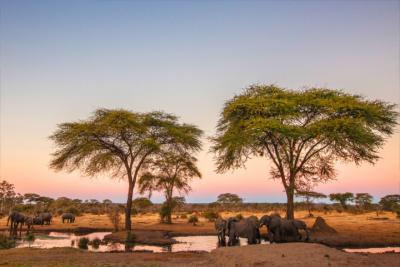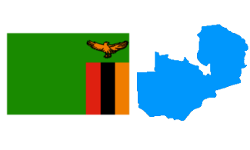Travel Offers
Travelmyne Featureprint
Distance
Zambia – African Wilderness and Victoria Falls
You rarely experience Africa's wilderness as first-hand as on a trip through Zambia, which is known for safaris on foot. A world-famous attraction are the spectacular Victoria Falls. Together with the colourful, lively African culture, the country's natural beauty makes Zambia an attractive travel destination.
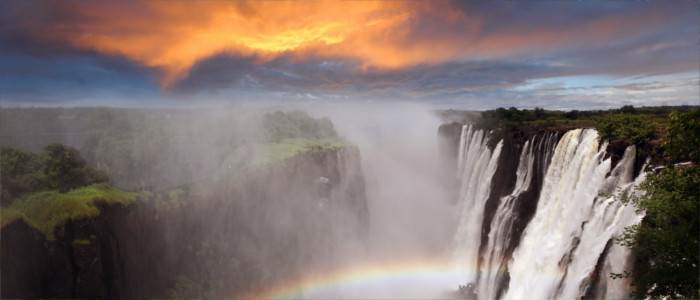
Geography - Plateau and many waterfalls
Zambia is an inland country in southern Africa. Almost all of the country's area consists of a plateau, which is crossed by mountain ranges, valleys and basins. The two greatest rivers, the Zambezi and the Congo River, as well as a number of tributaries flow into the valley in the form of many waterfalls. Zambia has a climate with warm and mostly dry weather all year. While it is cooler from May to September (24 °C on average), it is about 30 °C from October to November. From December to April, the country is dominated by a rainy season which is often accompanied by severe storms.
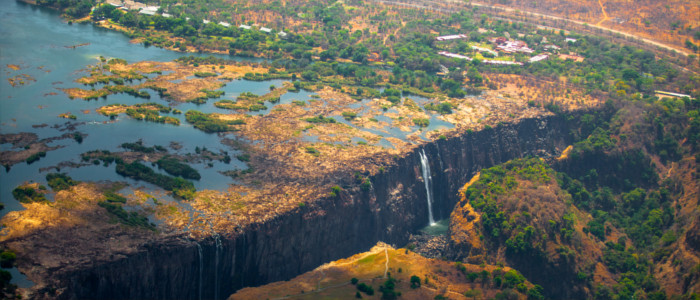
Nature - Wild, African animals
Zambia's landscape is characterised by dryness. Areas vegetated by faded, half-high grasses extend for miles. Occasionally you see bizarrely formed baobabs or acacias, which have adjusted to a life with only little water. The harsh environment of the African savannah is home to lions, rhinoceroses, baboons and cheetahs. Elephants, zebras and giraffes ramble the wild country in herds. Towards the west nature changes into the even more inhospitable environment of the Kalahari Basin with its steppes. Fertile lakes and swamplands emerged along the country's great rivers, which are vibrant with life. The water-rich regions even contain thick forests.
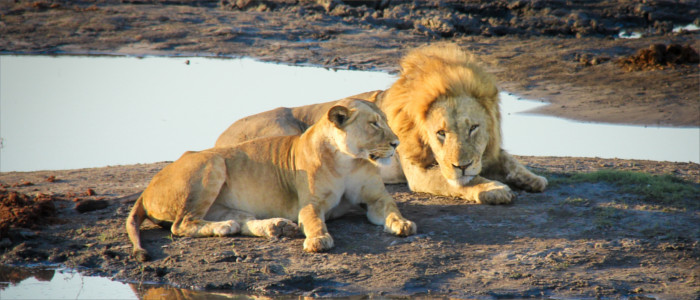
Natural sights - Many untouched national parks
Zambia's most significant attraction are the Victoria Falls, which the country shares with Zimbabwe. At that point, the 1.7 kilometres wide river Zambezi flows into the valley and down a drop of up to 110 metres. It creates a spray which can be seen from a distance of 30 kilometres. You can marvel at the Victoria Falls from a boat or plane. You have an extraordinary view into the depth from Livingstone Island, which is located at the edge. Right before the point where the water rushes down, you find a hollow, the Devil's Pool, in which brave people can bathe or have a look over the edge. Further below the Zambezi is dammed up to the Lake Kariba, which is 300 kilometres long. At its riversides you can see numerous hippopotamuses and crocodiles. In addition, the lake offers great conditions for fishing and boating. Zambia's greatest and best-known nature reserve is the Kafue National Park. It fascinates visitors with grassy landscapes which are full of zebras, wildebeests and buffaloes, unspoiled forests and river plains populated by hippopotamuses and crocodiles. You find the whole range of Africa's diverse fauna - from elephants to lions and anteaters to rhinoceroses – in the Luangwa National Park. During the rainy season the meadows transform into colourful carpets of flowers. In the park, camps serve as starting points for tours into the wilderness. Lake Tanganjika, on the other hand, invites visitors to relax as it has several bays with sandy beach which are greatly suited for swimming and sunbathing.
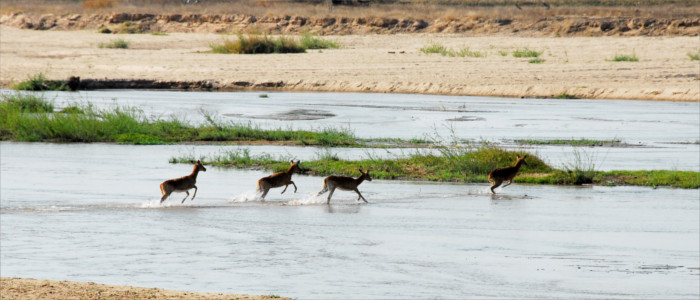
Culture - Zambia on its way to an independent state
Archaeological finds show that Zambia's territory was already populated in the early period. During colonial times the country belonged to the British colony Rhodesia. Since it gained independence in 1964, Zambia has been looking for a way of becoming an independent state. Music and dance are essential parts of the culture, especially at celebrations and religious ceremonies. Carved masks and colourful costumes are worn for these occasions. Extended families and tribes still play a major role in the country's social system.
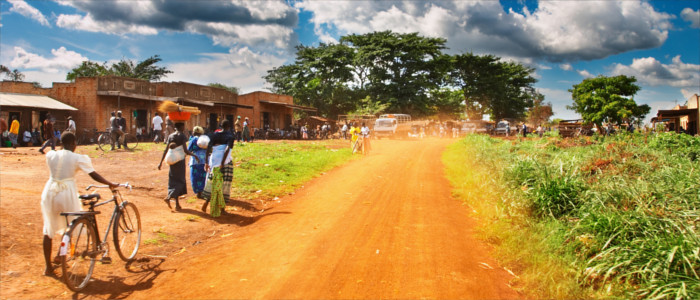
Cultural sights - Discovering the capital Lusaka and visiting markets
You feel Zambia's modern sides in the capital Lusaka. The city is growing and developing quickly, and companies spring up, especially in the city centre. Lusaka's heart is Cairo Road, on which many shops, markets and restaurants are located. Another sight is the cultural village Kabwata Cultural Centre, in which the traditions dance, art and handicraft are maintained, and the Lusaka National Museum. The mighty Kariba Dam near Lusaka, which is about 130 metres high and creates Lake Kariba, is another impressive attraction. A popular tourist destination is the city Livingstone because it is a suitable starting point for trips to the Victoria Falls, but the city's museums are also worth a visit. The Livingstone Museum, for example, displays many archaeological finds.
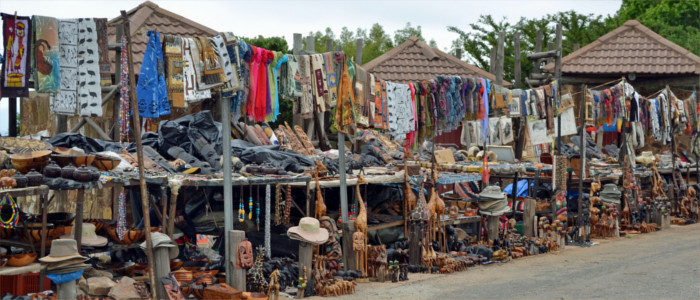
Experience - Getting to know the Zambian life and cuisine
When you go along the Zambezi by boat, you gain a wonderful insight into Zambia. Hippopotamuses, crocodiles and elephants are visible from the water. You can experience the people's way of living in the many hidden villages – living in extended families, everyday errands with the simplest means and traditional ceremonies. Local goods such as baskets, pottery and wood carvings can be bought there. The delight people take in music and dance is apparent in the cities' many theatre and dancing performances and clubs with live music, which provide entertainment and culture in the evening. Zambia's cuisine is plain. Meat, maize porridge, rice and vegetables are the baisc elements. The native fish, which are prepared in various ways, are culinary specialities.

Activities - On safari
Zambia is perfectly suited for hiking safaris. In addition, there is a well-developed network of paths through the magnificent African nature. The tours are not overcrowded so that you can walk through the landscape on your own. Numerous camps with overnight stays in midst the of the wilderness promise real adventures. Safaris by Jeep, canoe or on horseback are also possible. Especially the Zambezi offers first-rate conditions for thrilling sporting activities like rafting, river surfing, raft trips and the fishing of gigantic African tigerfish, which are characterised by their powerful teeth.
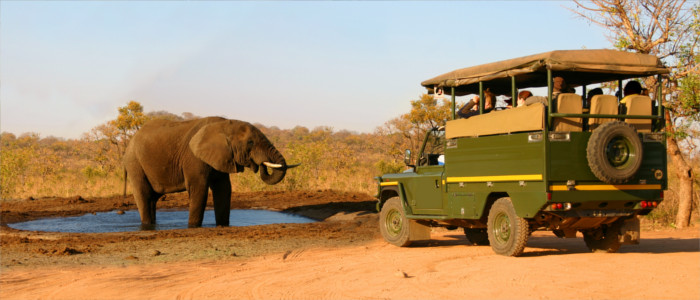
Information
The country's most important airport is the one in Lusaka (LUN). There are bus and train connections to Zambia's neighbouring countries. Within the country you can travel by plane, minibus or train. Communication is not a problem as the official language is English.
Zambia is the perfect travel destination for visiting the impressive Victoria Falls. In addition, the country contains many unknown first-rate natural treasures, which make Zambia attractive to lovers of nature, adventurers and travellers who want to be active.

